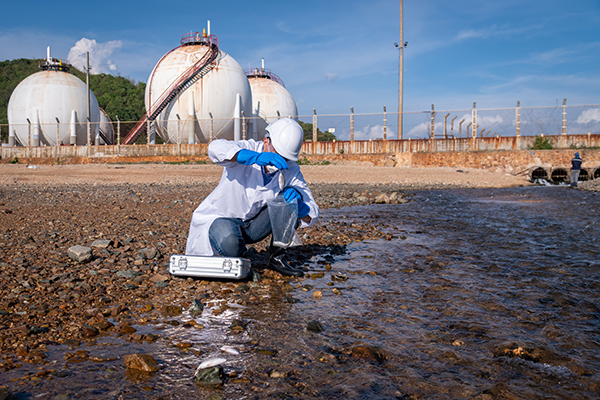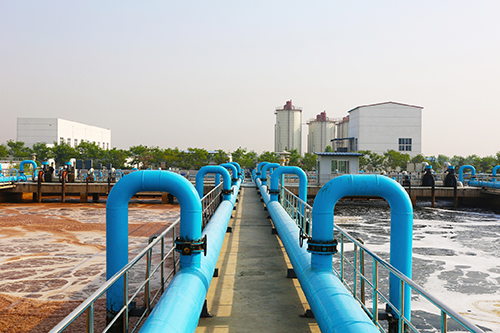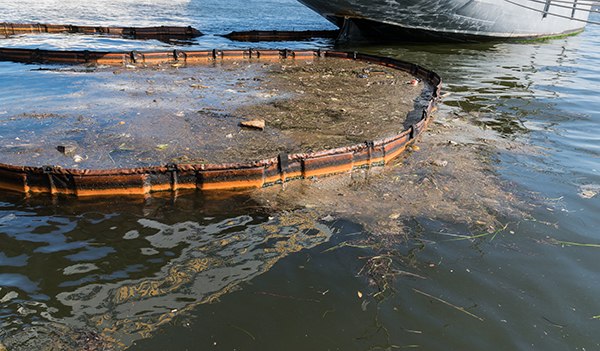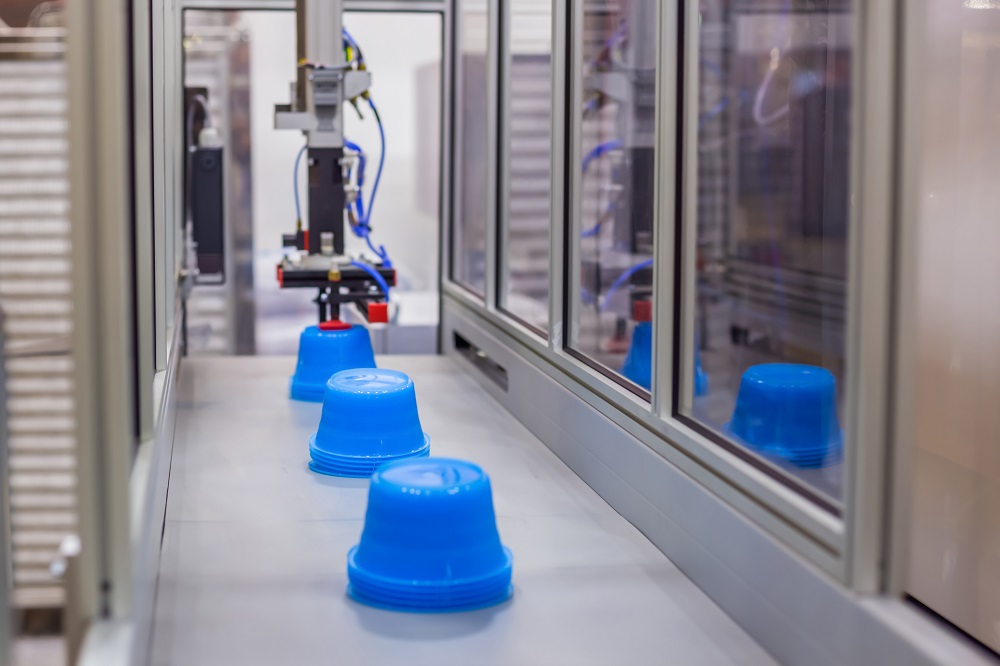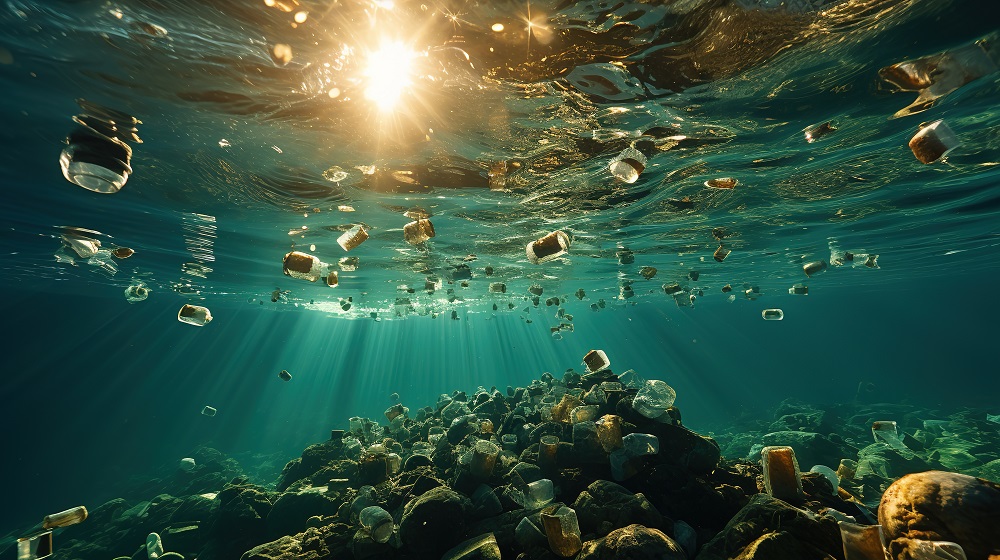As chronicled in The Invisible Wave, the chemicals industry has moved far too slowly to address the pollution crisis affecting our environment and oceans. One 2021 ranking, from a Sweden-based non-government organisation, The International Chemical Secretariat (ChemSec), scored most of the world’s largest 50 chemical companies between C+ and D for their performance on using chemicals of concern and green chemistry investments. While 76% of companies actively marketed sustainable products, only 8% showed evidence of a public strategy to phase out existing hazardous chemicals.1
Dr Jonatan Kleimark, senior chemicals adviser at ChemSec, spoke to Back to Blue about what’s stymying progress. First and foremost is the short-term financial cost for companies that are constrained by what the stockmarket rewards. “You need to change processes, you need to find alternatives for different chemicals, you may need to move your factory. There are so many things that need investment,” he says.
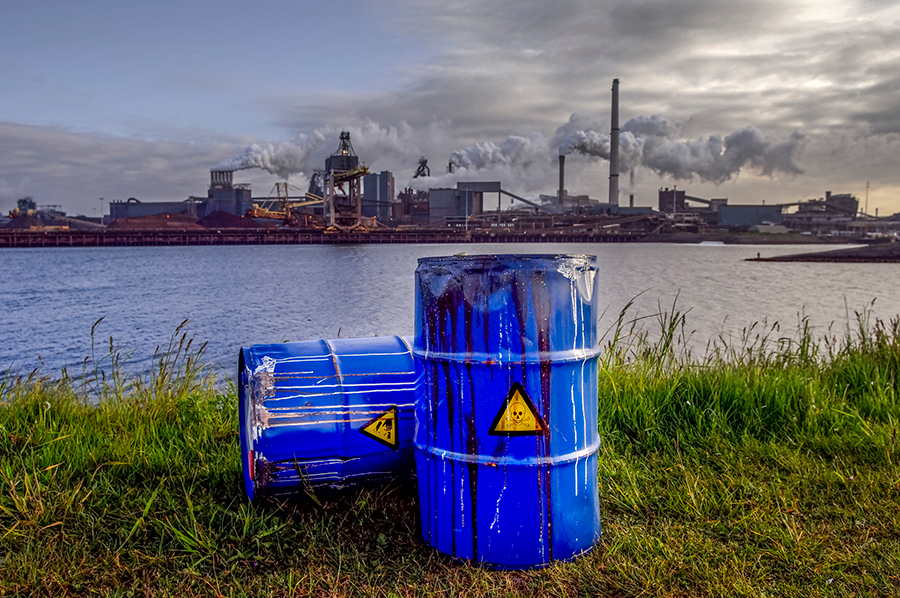
Without a level playing field, competitive forces undercut efforts towards reform. As Joel Tickner, professor of environmental health at University of Massachusetts Lowell, told Back to Blue’s Invisible Wave report: “The problem is if a competitor is selling a cheaper, more polluting incumbent product and customers are not willing to absorb higher costs, that company is going to lose market share.”
Even when supply-chain partners agitate for more data, companies are reluctant to share sensitive commercial information. Dr Kleimark says retailers like H&M, IKEA and Apple have shown ambition in terms of disclosing details on the chemical contents of products, but chemical companies are not forthcoming in sharing it and consumer pressure is not particularly strong in the chemicals space overall, apart from plastics. “Talking about chemicals is something that regular people and consumers don’t do because it’s complicated. It’s very hard to understand what the problem is because it’s not direct.”
“You need to change processes, you need to find alternatives for different chemicals, you may need to move your factory. There are so many things that need investment,”
– Dr Jonatan Kleimark, senior chemicals adviser at ChemSec
Cost and financial incentives are not the only obstacles to progress. The complexity of the chemical universe makes fertile ground for the selective, non-comparable reporting that furnishes the worst greenwashing practices. “Green chemistry means so many different things for different people and different companies, depending on how the company or the organisation is trying to implement these definitions,” says Dr Kleimark.
The carbon emissions produced by a shoe, a smartphone or a hamburger are becoming easier to quantify thanks to advances in data science and the simplicity of the end point: CO2. The sheer number of chemicals in existence make it hard, perhaps impossible, to quantify performance in a consistent, comparable way. Because of how many chemicals exist, companies can bend the story to their favour.
“They can say ‘we have phased out these kinds of chemicals because they are hazardous’, but they might use a lot of other hazardous chemicals which we don’t know about,” he observes. Some chemical processes are also trade secrets, so firms “don’t want to share what they are doing in order to achieve a better process. So overall, it’s much more problematic to have a metric for showing the change,” argues Dr Kleimark.
Green shoots
Despite the sobering challenges and the sluggish pace of change, there are glimmers of light. Dr Kleimark says chemical pollution has ascended the corporate agenda in recent years. “If we compare it to three to five years ago, it was much harder to get people to talk about the problem of chemical pollution. I think that barrier is much lower now and that’s positive”. Several chemical producers have used the ChemSec rankings as an opportunity to improve their score.
The economics are changing too. As detailed in The Invisible Wave, companies that produce hazardous chemicals face high safety compliance costs. Sumitomo Chemical, for example, spends more than US$370m on environmental protection costs each year.2 Transitioning to safer chemicals can lower costs and risks. Pfizer, for instance, saw reduced costs, by employing green chemistry principles to reduce manufacturing waste.3
“Green chemistry means so many different things for different people and different companies, depending on how the company or the organisation is trying to implement these definitions,”
– Dr Jonatan Kleimark, senior chemicals adviser at ChemSec
The escalating price of natural gas due to Russia’s war in Ukraine and broader inflationary and supply-chain problems impinging the global economy are a catalyst for accelerating the transition from fossil fuels, a vital input for many chemical products. “Some of the downstream effects of the war have increased the demand for our chemistry dramatically,” says Gaurab Chakrabarti, founder of Solugen, a green chemistry start-up. The sustainability imperative is proving not just resilient but reinvigorated in the current environment. “We thought maybe the ESG push was going to die down due to the recession, but it’s not true: people still care. Those things have really bolstered our business.”
Taking a proactive step will not happen overnight and across the board; likely, frontier players in the ecosystem will take the lead. “I know for a fact that a lot of the clothing manufacturers and chemical manufacturers in nylon plants are under pressure from consumers who say, ‘I want something that has a full life cycle assessment’. It’s only a matter of time before that starts to permeate into other parts of the industry,” says Mr Chakrabarti.
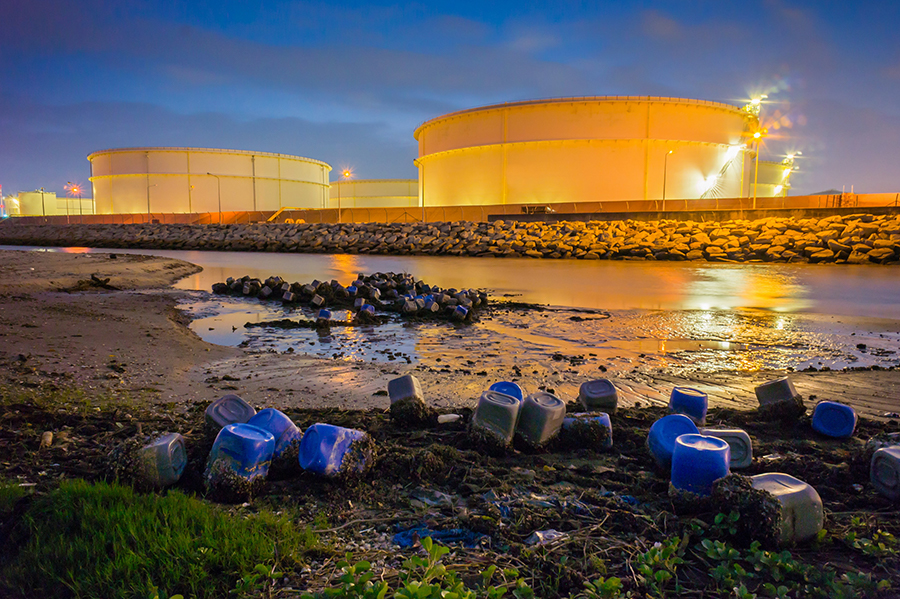
Start-ups, backed by ambitious venture capitalists and academic expertise, are bringing the technical wizardry without the legacy infrastructure and stockmarket-based short-termism of incumbents. “A lot of alternatives to hazardous chemicals are coming from start-ups or spin-offs from universities,” observes Dr Kleimark. “There are a lot of barriers within larger companies to doing that innovation”.
Mr Chakrabarti also believes large companies are doing more than outsiders might believe but are taking time to prove out the technical aspects. “Big chemical companies have gone unnoticed, because they’re so big, and everyone thinks they’re evil. I never live in a black and white world. I believe that even these big chemical companies that have a storied history [in pollution] are doing good work in this space, but start-ups are just more vocal about it.”
“Some of the downstream effects of the war have increased the demand for our chemistry dramatically,”
– Gaurab Chakrabarti, founder of Solugen
Large companies “would rather have the data and the proof points before they talk openly about how they’re really helping,” he says. “Start-ups are pushing it, but for us to have a significant impact, we need to get the big companies to be really involved.”
Governments can set the tone and direction. Experts are unanimous that the EU has led the world in cleaning up the chemicals sector in terms of strategy, investment and policy direction. “European chemical companies, and companies that have assets in Europe, are taking a very hard look at their water balance, ie, where do their products end up in the water systems?” says Solugen’s Chakrabarti. He credits China and Singapore for making significant inroads in improving life cycle analysis of chemicals, including into the water and oceans. He says the US is “about five years behind Europe”.
Policy ambition in turn drives business decisions. “We’re looking at Europe for expansion, precisely because of the scrutiny on the lifecycle, not just the carbon part, but the downstream effects of how chemicals are affecting water systems and oceans,” says Chakrabarti. “I think that’s a really attractive place for us to have a big value proposition”.
Momentum drives investment, which further improves the economics, helping companies cross the line to a more sustainable approach, he says. “It’s a virtuous cycle. The more companies care, the more dollars will naturally go into the businesses that provide solutions, creating more cash flow to create more of the solutions that lower the cost, broadening the market and creating this beautiful positive feedback loop”.
THANK YOU
Thank you for your interest in Back to Blue, please feel free to explore our content.
CONTACT THE BACK TO BLUE TEAM
If you would like to co-design the Back to Blue roadmap or have feedback on content, events, editorial or media-related feedback, please fill out the form below. Thank you.










